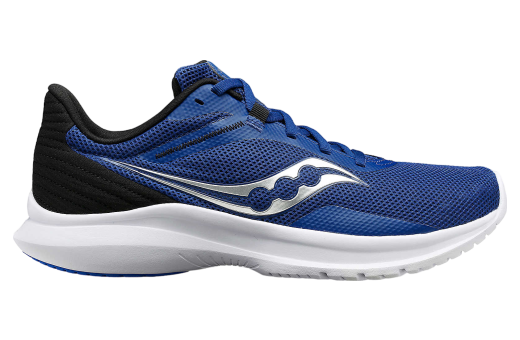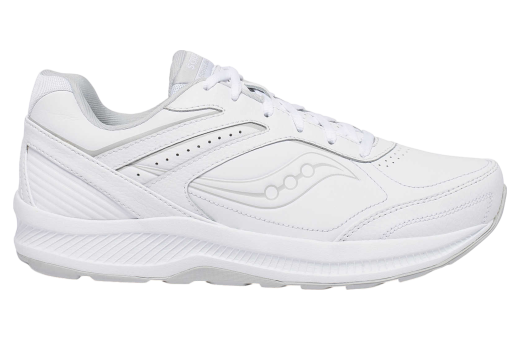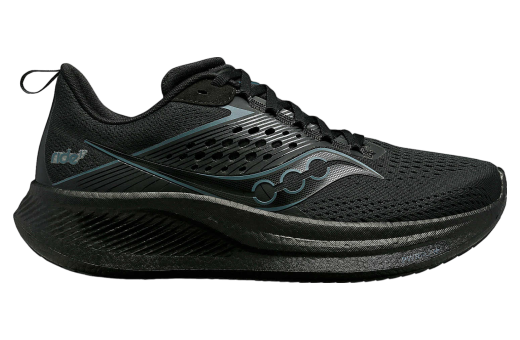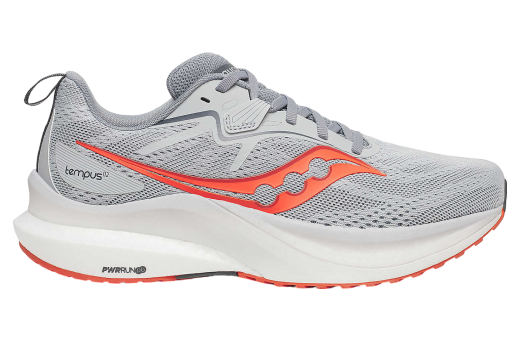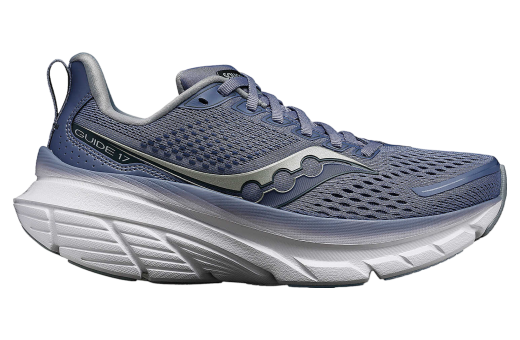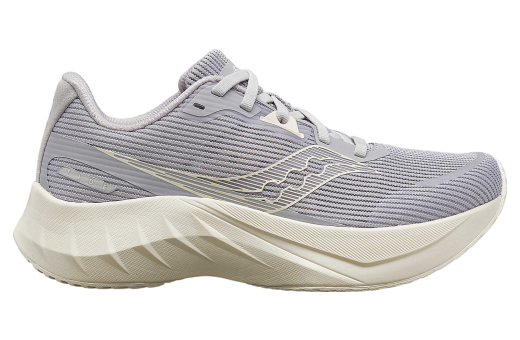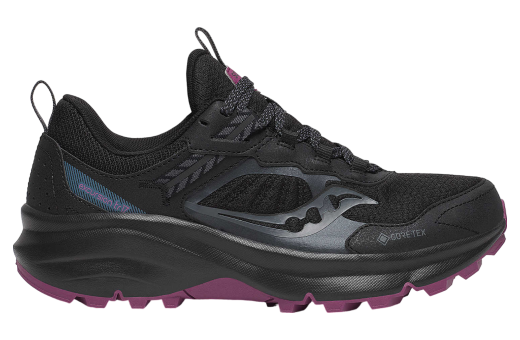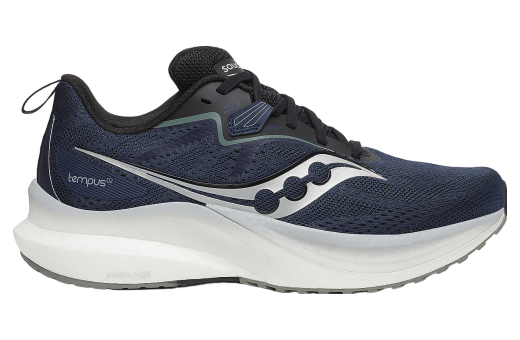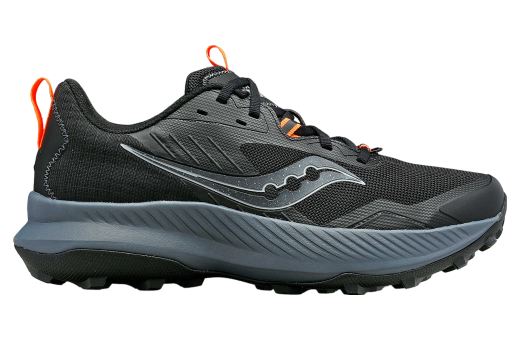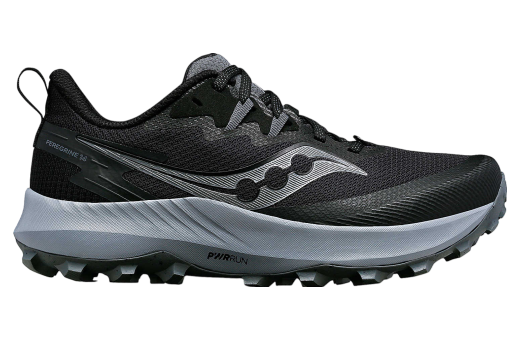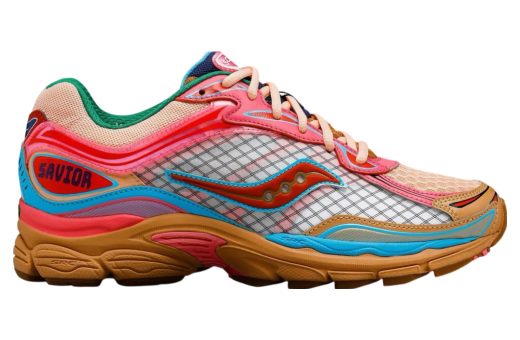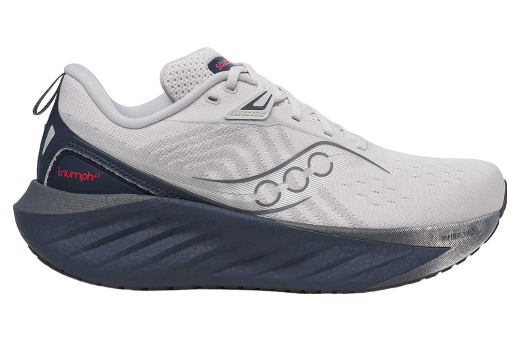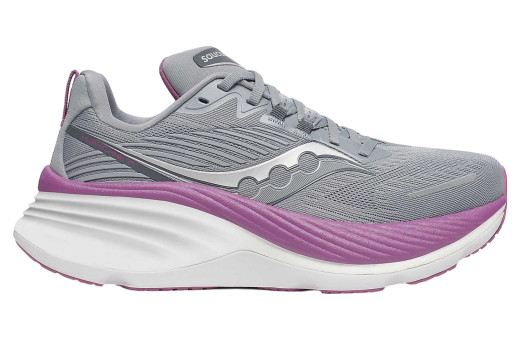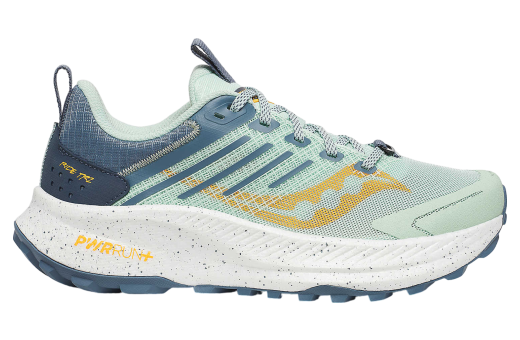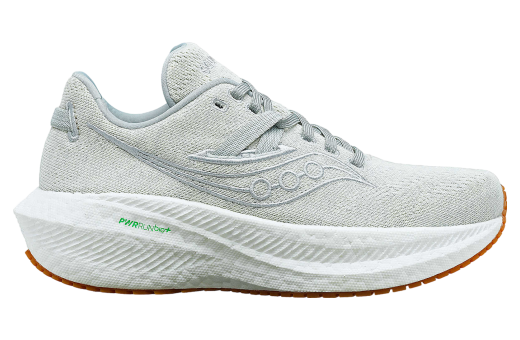Saucony
Saucony, established in 1898, is a prominent American manufacturer specializing in athletic and casual footwear, as well as apparel. Renowned for its innovative designs and commitment to performance, Saucony has carved a niche in the running community by consistently integrating advanced technology and research into its products. The brand's logo, which features a river symbol with three distinct dots, signifies the constant flow of water near the original factory location and the three boulders found in that river, reflective of the company's origins in Kutztown, Pennsylvania. Over the years, Saucony’s dedication to quality and functionality has made it a favorite among both professional athletes and recreational runners around the world.
Saucony's product range extends beyond running shoes to include trail-running shoes, racing footwear, and performance apparel. The company's innovation is evident in their acclaimed shoe technologies such as GRID cushioning and EVERUN, which provide superior stability, comfort, and energy return with every step. The brand is also deeply committed to sustainability, making efforts to use environmentally friendly materials and practices in their manufacturing processes. In addition to a strong focus on high performance, Saucony actively engages with the running community through sponsorships, events, and partnerships, fostering a supportive and inclusive environment for runners of all levels. This deep connection with its users has cemented Saucony's reputation as a trusted and beloved name in the athletic industry.
History of Saucony
Saucony, a name synonymous with running shoes and athletic footwear, has a rich and storied history that reflects both the evolutionary trajectory of the sportswear industry and the aspirations of runners around the world. This journey, spanning over a century, is marked by innovation, perseverance, and a commitment to quality. To fully appreciate Saucony’s status in the athletic shoe industry, we must trace its origins, explore its milestones, and understand its impact on the global market.
Origins and Early Years
The story of Saucony begins in 1898 in the small town of Kutztown, Pennsylvania. It was here that four young businessmen founded a company dedicated to creating athletic footwear. Nestled along the banks of the Saucony Creek, the company drew its name from this local geographical feature, which itself has roots in Native American terminology meaning "mouth of a creek or river."
Initially, the fledgling enterprise focused on producing children’s shoes. This early emphasis on quality and craftsmanship laid the groundwork for what would eventually become a renowned brand. The local demand and craftsmanship ensured that the company laid down strong foundations in its early years.
The Early 20th Century: Building a Reputation
The early decades of the 20th century were essential for Saucony in terms of establishing its presence in the shoemaking industry. As America industrialized and urbanized, the demand for quality footwear grew exponentially. Saucony responded by gradually broadening its product line and refining its production techniques.
By 1910, the company had gained significant recognition for its attention to detail and quality. This period enabled Saucony to build a loyal customer base that sought durable and reliable shoes for everyday use. However, the company's focus was yet to shift predominantly towards athletic footwear.
The WWII Era: A Time of Transformation
World War II marked a transformative period for many American industries, including Saucony. The war effort necessitated that factories pivot towards producing goods essential for the military. During this time, Saucony began making boots for the U.S. Army. This not only helped the company maintain operations amidst wartime scarcities but also honed its reputation for durable and reliable footwear.
Additionally, this era saw a burgeoning interest in personal fitness and athletics, especially as soldiers returned home and recreational sports gained popularity. Saucony was well-positioned to capitalize on this trend, thanks in part to the experience and insights gained during the war.
Incorporation into Hyde Athletic Industries
A significant milestone in the history of Saucony came in 1968 when it was acquired by Hyde Athletic Industries, a company with a strong background in athletic footwear. This acquisition proved to be a pivotal moment, as Hyde emphasized innovation and recognized Saucony’s potential. Hyde’s resources and expertise enabled Saucony to expand and innovate at an unprecedented rate.
The 1970s: Innovations and Breakthroughs
The 1970s were a decade of major transformations for Saucony. This period truly marked the beginning of the brand's specialization in running shoes, coinciding with a national jogging craze occurring in the United States. Americans were increasingly interested in fitness and running, leading to an expansive market for specialized running shoes.
In 1977, Saucony gained significant attention when the brand's shoe was featured in the “Consumer Product Awards” by *Consumer Reports* magazine. Saucony's production of quality, well-designed running shoes earned the brand a seventh-place ranking out of more than 100 different brands evaluated. This recognition catapulted Saucony into the national spotlight and positioned it as a brand directly associated with quality and performance.
During this era, Saucony introduced several influential models, such as the "Trainer 80," which set new standards in the running shoe industry. These models incorporated advanced technology designed to enhance the running experience, such as improved cushioning and better foot support. Another key model, the "Jazz Original," launched in 1981, incorporated these innovations as well. The Jazz series became iconic, known for its unique look and functional design. These shoes were not only aesthetically pleasing but also featured superior engineering tailored to the needs of runners.
The 1980s: Expansion and Excellence
The 1980s witnessed Saucony solidifying its reputation as a premier brand for serious runners. This decade was pivotal, marked by increased research and development and a focus on biomechanical engineering to create footwear that met the specific needs of competitive and amateur runners alike.
In 1983, Saucony released the "Shadow" line, which introduced a stabilizing heel that significantly improved the balance and comfort of their running shoes. Innovations like these ensured that Saucony stayed ahead of its competitors by continually improving product performance.
The company expanded its reach during these years by entering international markets. Saucony's emphasis on high-quality athletic shoes attracted a global audience, and the brand began establishing a solid presence in Europe and Asia, markets keen on high-performance sportswear.
The 1990s: Technological Advancements
The 1990s were a period of substantial technological growth for Saucony. The company invested heavily in research to develop shoes that offered not only comfort and durability but also enhanced athletic performance.
Notable advancements included the incorporation of GRID technology in their shoes. Standing for Ground Reaction Inertia Device, GRID was introduced in 1991 and became the first patented cushioning system to offer both support and stability. This was a game-changer in the industry, as it specifically addressed the issue of balance in running shoes, something that was previously an overlooked aspect.
GRID technology distinguished Saucony as a leader in running shoe innovation, setting it apart from other brands. Its shoes were now designed to distribute impact evenly and provide better support, significantly reducing the risk of injuries and enhancing the running experience.
The New Millennium: A Commitment to Innovation
As the new millennium approached, Saucony continued to enhance its product line with technological innovations. In 2005, the company was acquired by Stride Rite Corporation, which later became part of Wolverine World Wide in 2012. Under new leadership, Saucony was able to leverage additional resources and expertise, enabling it to thrive in a highly competitive market.
One of the significant contributions during the early 2000s was the ProGrid technology, an advancement of the GRID system. ProGrid was specifically designed to provide improved shock absorption and a smoother running experience. Shoes featuring ProGrid technology were well-received in the running community, further cementing Saucony's reputation for technological innovation.
Sustainability and Modern Developments
In recent years, Saucony has undertaken numerous initiatives to address the growing concerns about sustainability and environmental impact. The “Good Runner” initiative underscores the company’s commitment to ethical manufacturing and sustainability. Through this initiative, Saucony has pledged to reduce its environmental footprint by using recycled materials and more sustainable production processes.
Saucony has also invested heavily in data-driven design processes. The use of athletic performance data to inform shoe design has become increasingly prevalent, enabling the creation of customized footwear that caters precisely to the needs of various types of runners. This blend of data science and traditional craftsmanship has led to remarkable new products, such as the Kinvara and the Freedom series, which offer biomechanical enhancements designed for optimum performance and comfort.
Cultural Impact and Sponsorship
Beyond technical specifications, Saucony has made considerable cultural contributions to the world of running. By sponsoring major athletic events and partnering with elite athletes, Saucony has maintained a strong presence in the running community. The brand's emphasis on inclusivity and community building resonates deeply with both amateur and professional athletes, fostering a sense of loyalty and trust.
Saucony also has a series of community-outreach initiatives aimed at promoting running and healthy lifestyles among youth and underprivileged communities. These programs have broadened Saucony's impact, making the brand synonymous not only with high-quality athletic wear but also with social responsibility and community engagement.
Looking Ahead
Saucony’s history is a testament to the power of innovation, quality, and commitment. From its humble beginnings along the banks of the Saucony Creek to its current status as a global leader in athletic footwear, the brand has continuously evolved while staying true to its core values. Moving forward, Saucony is poised to continue its tradition of excellence, driven by technological innovations, sustainable practices, and a relentless focus on meeting the needs of runners worldwide.
As the world of athletics continues to evolve, driven by new technologies and shifting consumer preferences, Saucony's rich heritage, combined with its forward-thinking approach, positions it well for ongoing success and influence.
In summary, Saucony’s journey from a small-town shoemaker to a globally-recognized brand underscores a remarkable tale of perseverance, adaptation, and innovation. It stands as a prominent example of how dedication to quality and a willingness to embrace change can lead to enduring success.



